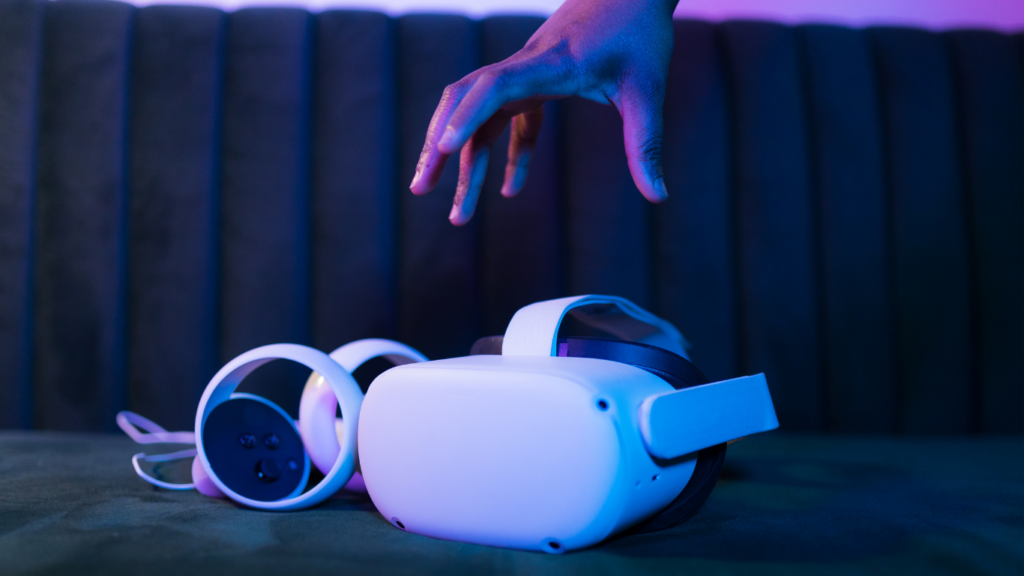The Evolution of Virtual Reality
Virtual reality has come a long way since its inception. In the early days, blocky graphics and limited interaction characterized VR systems, restricting their use mainly to tech demonstrations. Today, VR offers lifelike visuals, advanced motion tracking, and intricate haptic feedback, transforming user experiences in numerous fields.
Early Beginnings
In the 1960s, the first VR systems emerged. Ivan Sutherland created the Sword of Damocles, one of the earliest head-mounted displays. This device pioneered VR technology but was bulky and limited in functionality. Throughout the 70s and 80s, VR technology saw incremental improvements but remained largely experimental and expensive.
Market Introduction
The 1990s marked VR’s entry into consumer markets. Companies like Sega and Nintendo released VR gaming systems. However, these systems faced challenges such as high costs and technological limitations, leading to their eventual decline. Despite these setbacks, they laid the groundwork for future developments.
Modern Advancements
In the 2010s, VR experienced a resurgence. The Oculus Rift, launched in 2012 through a successful Kickstarter campaign, redefined possibilities in the VR space. High-resolution displays and precise motion sensors became more accessible, leading to widespread adoption. Other companies, including HTC and Sony, introduced comparable systems, further advancing the technology.
2024’s Breakthroughs
In 2024, VR is set for significant breakthroughs. Ultra-realistic graphics and enhanced haptic feedback are creating immersive experiences. Improved software algorithms are enabling more natural interactions, making VR an indispensable tool in healthcare, education, and social interactions. Companies are also addressing previous VR challenges, such as motion sickness and limited field of view.
VR’s journey from rudimentary systems to sophisticated platforms has been transformative. As we look to 2024, virtual reality’s evolution promises even greater innovations, making it a critical technology for various industries.
2024’s Key Technological Advancements
In 2024, virtual reality’s technological advancements promise to revolutionize user experiences. Key improvements include enhanced display resolutions, advanced haptic feedback, and improved tracking systems.
Improved Display Resolutions
Manufacturers have developed VR headsets featuring unprecedented display resolutions. Achieving resolutions of up to 8K per eye, these headsets eliminate the screen-door effect and deliver lifelike visuals. Utilizing OLED and MicroLED technologies, displays boast higher contrast ratios and better color accuracy, ensuring immersive experiences. Meta and Valve have set new industry standards with their ultra-high-resolution VR devices, pushing the boundaries of visual fidelity.
Enhanced Haptic Feedback
Haptic feedback technology will make interacting with virtual environments more tactile in 2024. Advanced haptic gloves and suits incorporate refined actuators that replicate nuanced sensations like texture and pressure. Companies like HaptX and SenseGlove lead innovation in providing realistic touch experiences. This progress makes VR applications in medical training, remote work, and gaming more impactful by offering a greater sense of presence and realism.
Advanced Tracking Systems
- Sophisticated tracking systems will further enhance user immersion in virtual spaces.
- Utilizing inside-out tracking with high-resolution cameras and AI algorithms, devices now offer precise positional and orientation tracking without external sensors.
- Eye-tracking technology improves interaction by enabling foveated rendering, which adjusts graphics quality based on where the user is looking, optimizing performance.
- Firms like Oculus and HTC have integrated these advanced tracking features into their latest VR headsets, making user movements more intuitive and seamless.
Notable VR Devices of 2024

In 2024, VR devices are set to deliver unprecedented levels of immersion and interaction. Cutting-edge developments in both headsets and controllers promise to revolutionize user experiences in diverse fields.
Leading VR Headsets
The Meta Quest Pro stands out with its 8K resolution per eye, ensuring visual fidelity that’s almost indistinguishable from reality. Its integrated eye-tracking provides precise control and interaction within virtual environments. Valve’s Index 2 also boasts impressive specs, featuring a 120 Hz refresh rate for smooth motion and improved field of view. Meanwhile, Sony’s PlayStation VR2 integrates OLED displays for vibrant colors and deep blacks, enhancing the graphical depth of VR games and applications.
Innovative Controllers
Controllers have become more intuitive in 2024, enhancing user interaction and feedback. The HaptX Gloves offer advanced haptic feedback, simulating real textures and resistance, making virtual objects feel tangible. SenseGlove Nova separates itself with force feedback technology that replicates grip sensations, allowing for natural, precise handling of virtual items. Finally, Meta’s Touch Pro controllers incorporate finger-tracking capabilities, offering a natural and responsive way to interact with digital environments.
Impact on Various Industries
VR technology in 2024 is set to revolutionize multiple sectors, enhancing both user experience and industry capabilities.
Gaming and Entertainment
Game studios now create experiences with unprecedented detail, thanks to devices like Meta Quest Pro with 8K resolution per eye. Titles such as “Half-Life: Alyx 2” leverage enhanced haptic feedback from controllers like the HaptX Gloves, providing realistic tactile sensations. Major streaming services incorporate VR to offer immersive movies, concerts, and sports events.
Healthcare and Therapy
VR aids in advanced surgical simulations using platforms powered by Valve’s Index 2. In therapy, VR facilitates pain management and phobia treatments, with devices like Sony’s PlayStation VR2 incorporating realistic environments. Telehealth integration offers personalized, remote consultations, reducing patient travel needs.
Education and Training
Educational institutions employ VR for interactive classrooms using tools like SenseGlove Nova, which enhance subject comprehension with hands-on experiences. Corporations use VR for employee training, simulating real-life scenarios that improve skill acquisition and safety awareness, reducing training time and costs.
Real Estate and Virtual Tours
Real estate firms use VR for virtual property tours, providing 360-degree views with Meta’s Touch Pro controllers that offer detailed spatial interactions. Buyers experience properties remotely, saving time and travel expenses. Architects and designers use VR to present designs to clients, facilitating better visualization and quicker feedback.
VR’s breakthroughs in 2024 offer tangible improvements across industries, enhancing efficiency, engagement, and accessibility.
Future Prospects and Challenges
Various industries are anticipating the breakthroughs in virtual reality expected in 2024. These advancements promise new developments and strategies to tackle existing limitations.
Potential Developments
Virtual reality technology will likely see enhancements in various aspects:
- Render Quality: Improved graphical fidelity and photorealism are expected. Devices could feature 8K resolution displays and ray tracing capabilities.
- Wireless Technology: Manufacturers might further perfect wireless VR headsets, reducing latency to near-zero levels for smoother experiences.
- AI Integration: VR experiences may incorporate more AI-driven features for personalized content and adaptive gameplay.
For instance, educational VR platforms could use AI to tailor lessons based on individual learning paces.
Addressing Current Limitations
Addressing existing challenges in virtual reality remains crucial:
- Cost Reduction: High costs hinder widespread adoption. Innovations could lead to more affordable devices without compromising quality.
- Motion Sickness: Motion sickness impacts user experience. Researchers are exploring methods like higher frame rates and improved field-of-view designs to mitigate this.
- Content Variety: A lack of diverse and high-quality VR content limits user engagement. Developing more AAA titles, immersive documentaries, and educational software can attract a broader audience.
In healthcare, implementing more realistic surgical simulations can help medical professionals gain better hands-on experience.
By focusing on these areas, 2024’s advancements in VR technology will address ongoing limitations and unlock new potentials.





